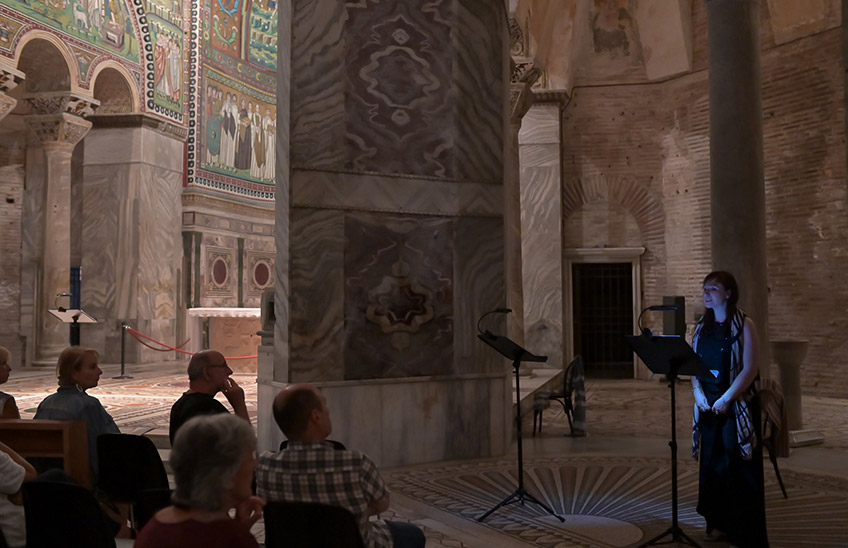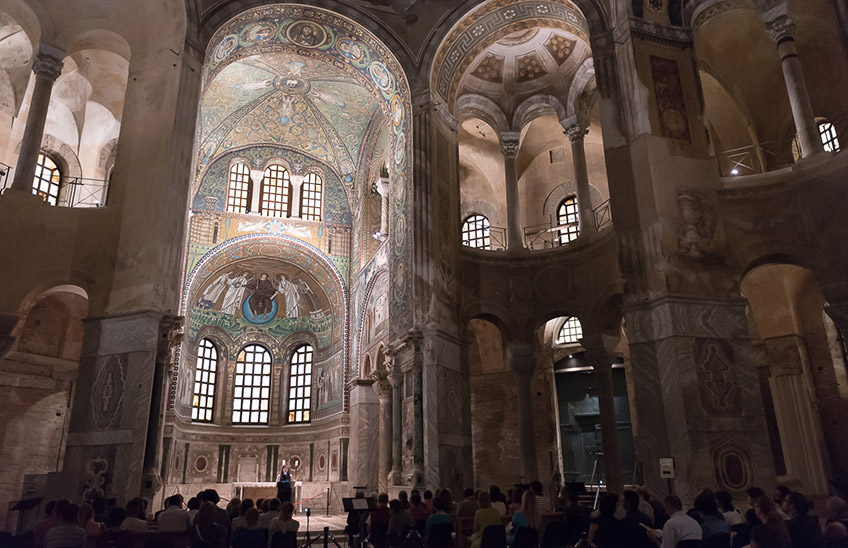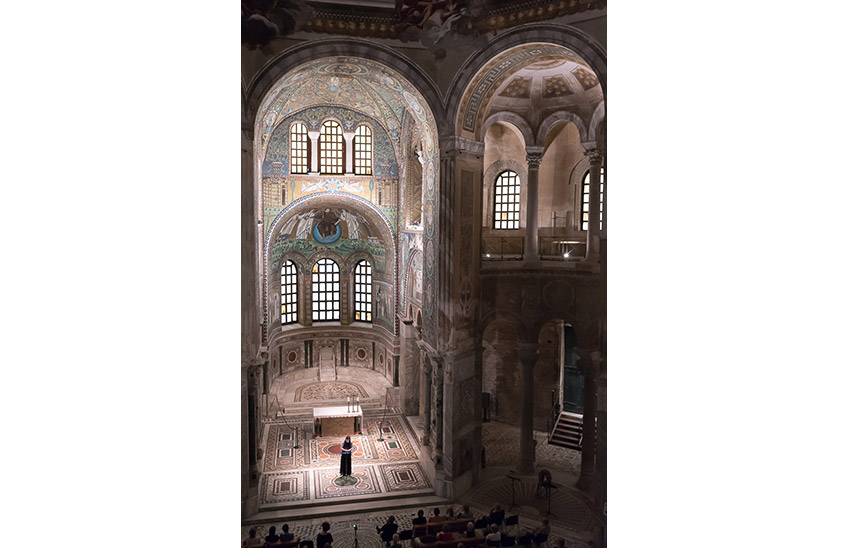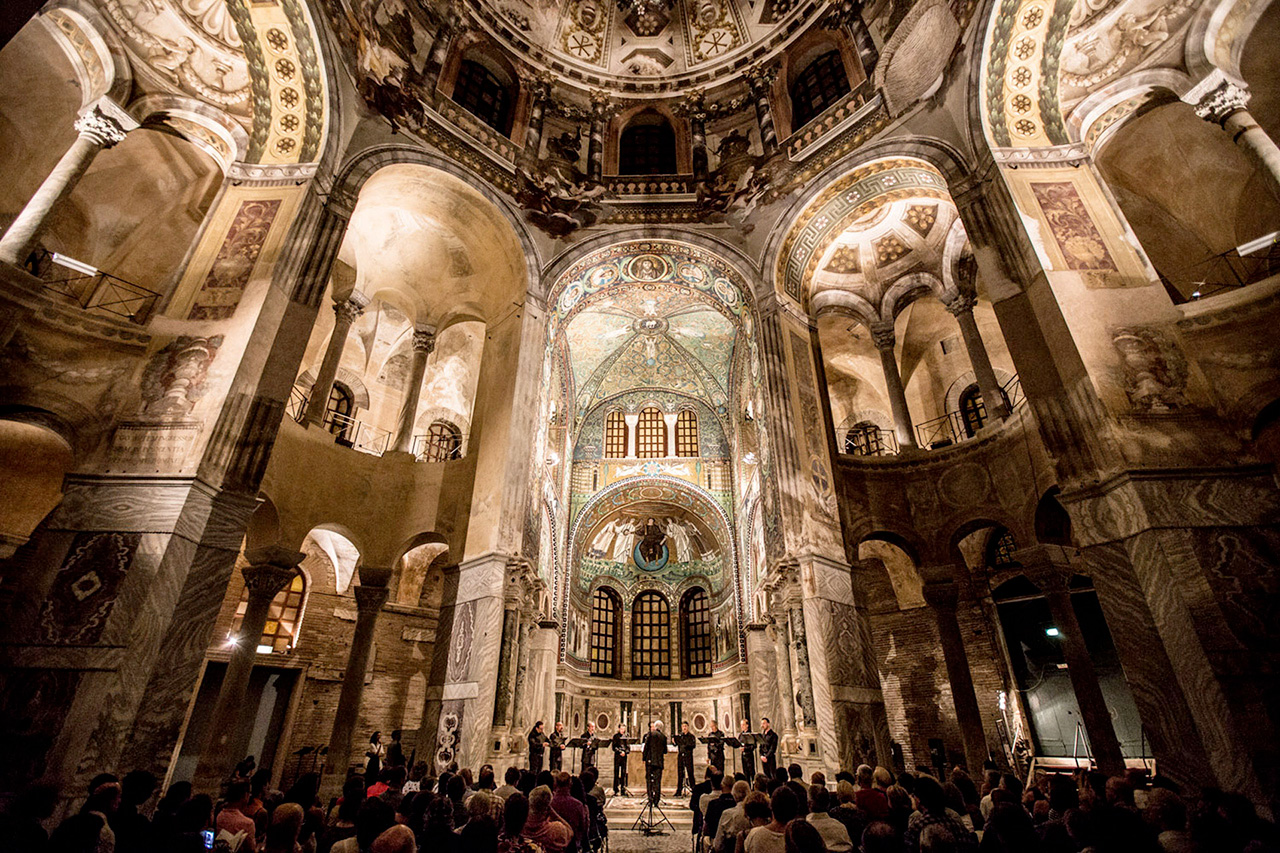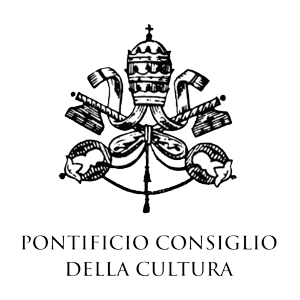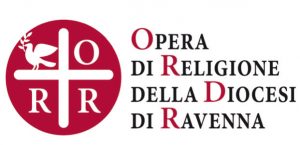© Angelo Palmieri
Vespers at San Vitale
Sacro contemporaneo
for voice
Giulia Zaniboni soprano
Programma
Gavin Bryars (1943)
da Laude Cortonese (2002-2004)
Laud 17 “Ave, vergene gaudente”
Mauricio Kagel (1931-2008)
from Der Turm zu Babel (2002)
no. 8 Italian
Gavin Bryars
from Laude Cortonese
Lauda 2 “Laude novella”
Giacinto Scelsi (1905-1988)
Three Latin Prayers (1972)
Ave Maria, Pater Noster, Alleluja
Mauricio Kagel
da Der Turm zu Babel (2002)
n. 3 English
Nikolaus Brass (1949)
da Benediktionen (2010-2011)
n. 4
John Cage (1912-1992)
Sonnekus2 (1985)
In the vocal repertoire, many contemporary techniques are closely linked to the early phases of cultured western music history, seeking the essential features that make the timbre of the voice the primary and primitive element of the sound experience.
The collections of laude (morning prayers) by Gavin Bryars is based on the spirit of the 13th C. Cortona collection of laude. Bryars follows the original compositions, closely adopting the same number of notes present in a syllable.
Giacinto Scelsi considered the human voice a device to explore the universe of sound. His Three Latin Prayers reveal how interested and fascinated he was by Gregorian chant.
Sonnekus2 by John Cage is a series of nine short pieces with texts based on the First Book of Moses (Genesis): very simple melodies exalt the central role of the timbre of the voice and the intelligibility of the declaimed text.
These two aspects underpin Der Turm zu Babel, a cycle of melodies (each one sung in a different language with its peculiar sonority) for the solo voice of Mauricio Kagel, an Argentinian composer who moved to Germany; and Benediktionen by the German composer Nikolaus Brass, comprising four fragments without text in which sound is the only main character, whether generated by the voice, by snapping fingers or by rubbing hands.
